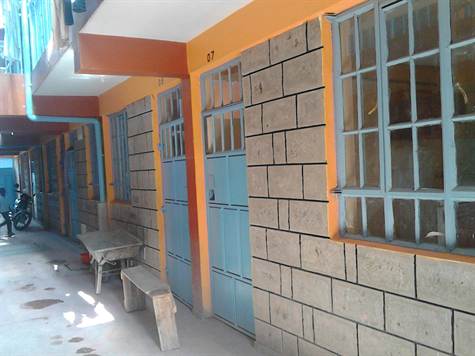Rental Property Investment is one of the most lucrative ways to build wealth, guaranteeing financial security after retirement.
With the fast-growing urban population, increased demand for housing, and rising property values, the rental property sector has proved lucrative for investors looking to soak their money in residential properties for rental income or commercial properties for long-term capital growth.
Arguably, most real estate investors in Kenya rely on financing to acquire property. But is it wise to take a loan to build rentals?
Reuben Kimani, the CEO of Username Investment, a real estate company in Kenya shared some of the benefits and risks of relying on loans to build rentals.
In a video on his YouTube channel, Kimani gave an example of two individuals, Simon and James who acquired rental property through different financing models and achieved different results.
He explains that Simon, started small, constructing a two-bedroom apartment in Nairobi back in 2015. Over the years, he expanded his portfolio and now earns enough rental income to supplement his lifestyle comfortably.
On the other hand, James took a loan from SACCO to build rentals in a rural area. Unfortunately, the monthly rent of Ksh.8,000 he collects falls far short of his loan repayment of Ksh.19,000.
Money Market investors reap up to 16% returns as NSE market booms
As such, he relies on his salary to cover the shortfall, turning what should have been an investment into a financial burden.
He highlights Simon’s success story as a case of proper planning, and James’ struggles as a case of improper calculations and feasibility studies, which makes borrowing for rentals a financial strain instead of profit.
Kimani however says just like any other investment, taking a loan for rental investment comes with potential benefits and risks.
Benefits of taking a loan for rentals
Steady rental income
He notes that rentals provide a steady monthly income which helps an investor to repay the loan and potentially generate a profit.
“As long as the rental income is higher than the loan that you are paying, you’re doing good business,” he said.
Capital gains
According to Kimani, most real estate billionaires make money from capital gains, whereby their assets appreciate over time increasing their overall net worth.
“Plots of land in very good places like Nakuru have appreciated from 400 to 800,000 in 4 years and from 200 to 800,000 in Ngon’g in the same 4 years. That is called capital gain and that’s how people make a lot of money,’’ he explained.
Long-term consistent income generation
Rental properties offer a reliable income stream, ideal for those planning for their retirement. Once established, you can enjoy consistent earnings with minimal effort.
“One of the things about flats and that’s why people do them, they give you consistent income for a long time. Whether you work or not people are staying in your rentals. You can actually stay at home because you are making money. This is passive income, very good for retired people.”
REITs: Step-by-step guide on how to invest your money in real estate assets
Risks of taking loans for rentals
Debt management
He advises investors to do their calculations well before taking loans for rentals as it can lead to financial strain. According to Kimani, the rental income should cover your loan repayments and leave you with a surplus.
“Especially for those stories that are shared for people who took some loan but they can’t pay the loan back using the rentals. For me, that is a mistake. They never did their calculation and visibility studies to determine.”
Maintenance costs
Properties require ongoing maintenance of things like broken locks, leaking sinks, etc which add up over time. Factor these costs into your investment calculations.
Low occupancy rates
He notes that low occupancy rate mostly affects commercial property than residential property due to the decreasing demand for commercial space as people shift to working online.
To be on the safer side, he advises investors to look for properties in areas with amenities and good transport to prevent low or inconsistent income.
“People want to stay in a safe place next to amenities; next to a place where you can catch transport in the morning and come back late at night without problems. So if your property is in a place that is not desirable of course you’ll have low occupants,” Kimani remarked.








